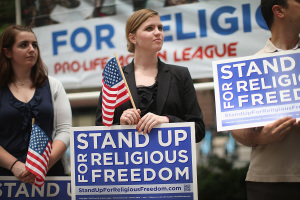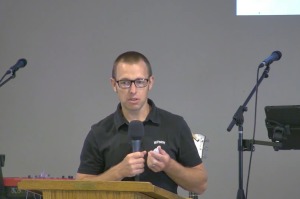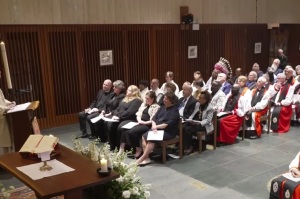Conservative Protestant fertility has declined dramatically, study finds

Conservative Protestants aren't making many babies these days.
While conservative Protestants have historically been associated with high rates of fertility, dramatic declines in recent generations now make them indistinguishable from mainline Protestants and Catholics, according to a new study.
The study used General Social Survey data from 1972 to 2016 to compare fertility patterns for Protestants and Catholics of childbearing age. Conservative Protestants (which includes both black Protestants and white evangelicals) used to have the highest birth rates overall, but the study found they had the largest decline in birth rates during the period studied.
The research also found that high church attendance stabilizes, or boosts, fertility for Catholics and mainline Protestants, but makes no difference for conservative Protestants.
"Are the faithful becoming less fruitful? The decline of conservative protestant fertility and the growing importance of religious practice and belief in childbearing in the US," by University of Oklahoma sociologists Samuel Perry and Cyrus Schleifer, was published in the Feb. 2019 edition of Social Science Research.
In 1972, conservative Protestants who went to church monthly or more had on average 2.89 children. The conservative Protestants who went to church less often had 2.83 kids, a statistically insignificant difference. By 2016, both of those numbers dropped the same amount, about 16 percent, putting churchgoing conservative Protestants at around 2.5 births on average.
Mainline Protestants began with lower fertility than conservative Protestants, at 2.48. And, their birth rate also decreased 16 percent by 2016. But, the birth rate for mainline Protestants who went to church monthly or more remained mostly stable, and may even increase.
For Catholics, the church attendance difference was even more stark. The birth rate dropped 9 percent for Catholics who don't attend nass often, from 2.54 to 2.31. But for Catholics who go to Mass monthly or more, the birth rate increased 4 percent, from 2.62 to 2.72.
So now, high attending Catholics have the highest birth rate, and conservative Protestants, regardless of how often they go to church, have about the same birth rate as high attending mainline Protestants.
While conservative Protestants tend to evangelize more and their children tend to remain in their faith tradition at a higher rate than Catholics and mainliners, the decrease in fertility "may portend significant future losses for conservative Protestants in the future," Perry and Schleifer concluded.
Another possible explanation for the differences, the authors suggested, is that the high attending mainline Protestants and Catholics are a more exceptional group to begin with, since both of those groups saw declines in attendance during the period studied. Among conservative Protestants, on the other hand, high attendance has been the norm, not the exception.
Birth rates have continued to drop in recent years, raising many concerns.
An August 2018 report by the Centers for Disease Control found that the total fertility rate in 2017 hit a new low (60.3 births per 1,000 women ages 15 to 44) and has been below replacement level since 1971.
A similar December report by the American Enterprise Institute found that the decline was not due to couples not wanting to have kids, but to barriers to childbearing, such as high student debt and housing costs, staying in school longer, and changing cultural expectations.
As author Jonathan Last detailed in 2013's What to Expect When No One's Expecting: America's Coming Demographic Disaster, nations suffer when their birth rate drops below replacement level (2.1 babies per female).
As resources shift from raising the young to caring for the elderly, economies suffer. The U.S. will be challenged in particular because the two biggest parts of the federal budget, Medicare and Social Security, are funded by current workers for the benefit of current retirees. As the workforce shrinks, proportionally to the number of retirees, those programs will be harder to fund.




























